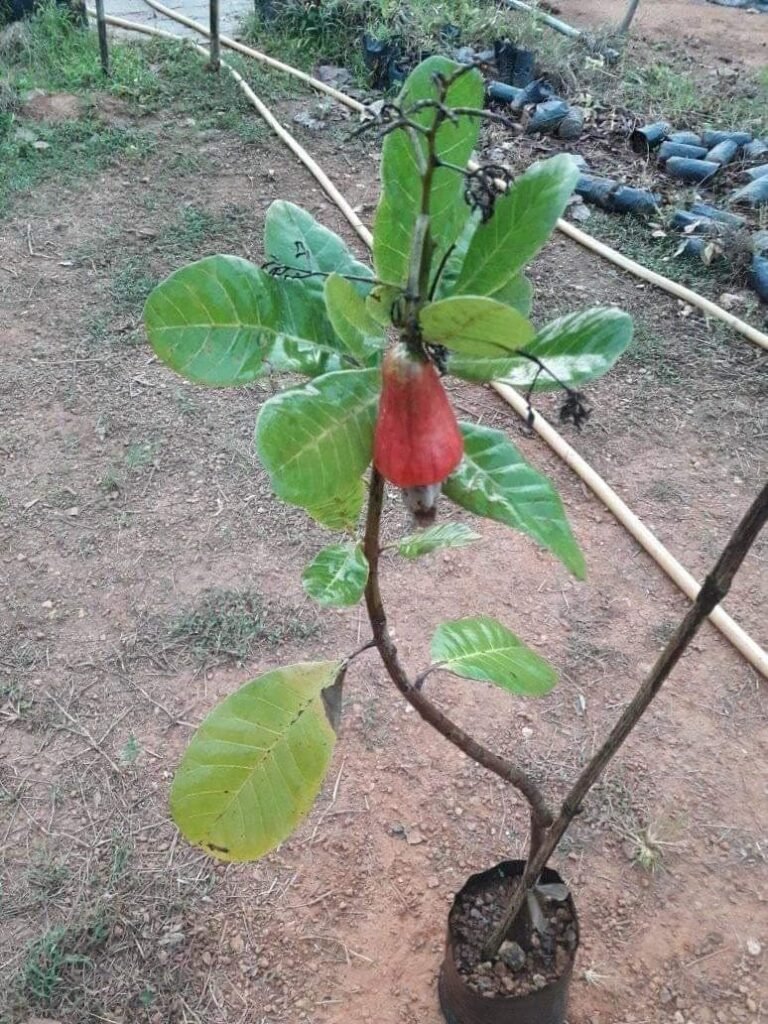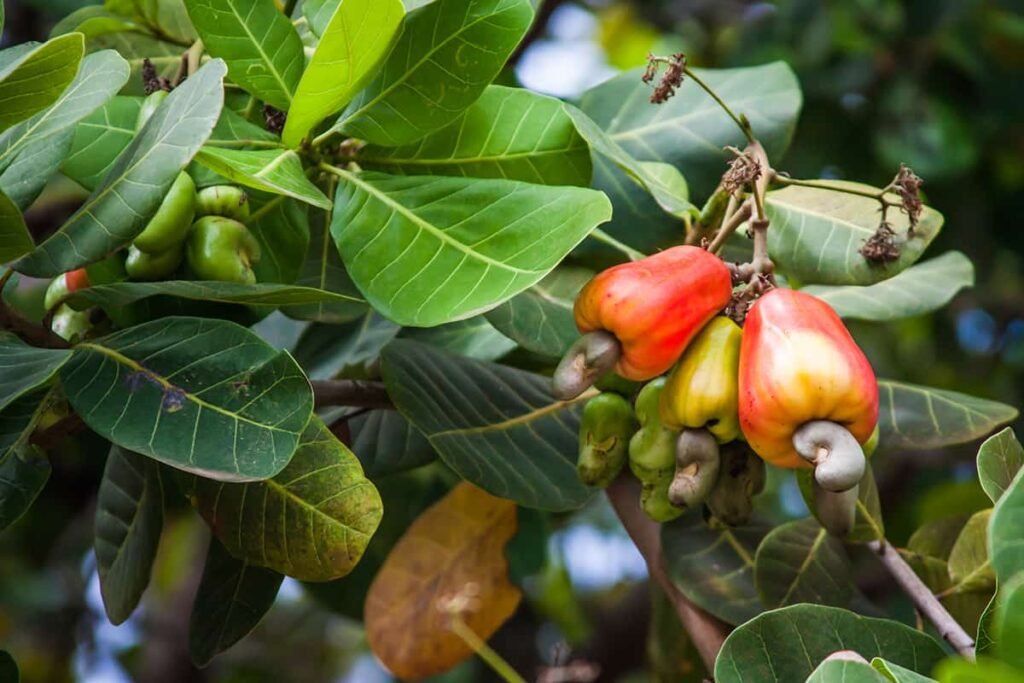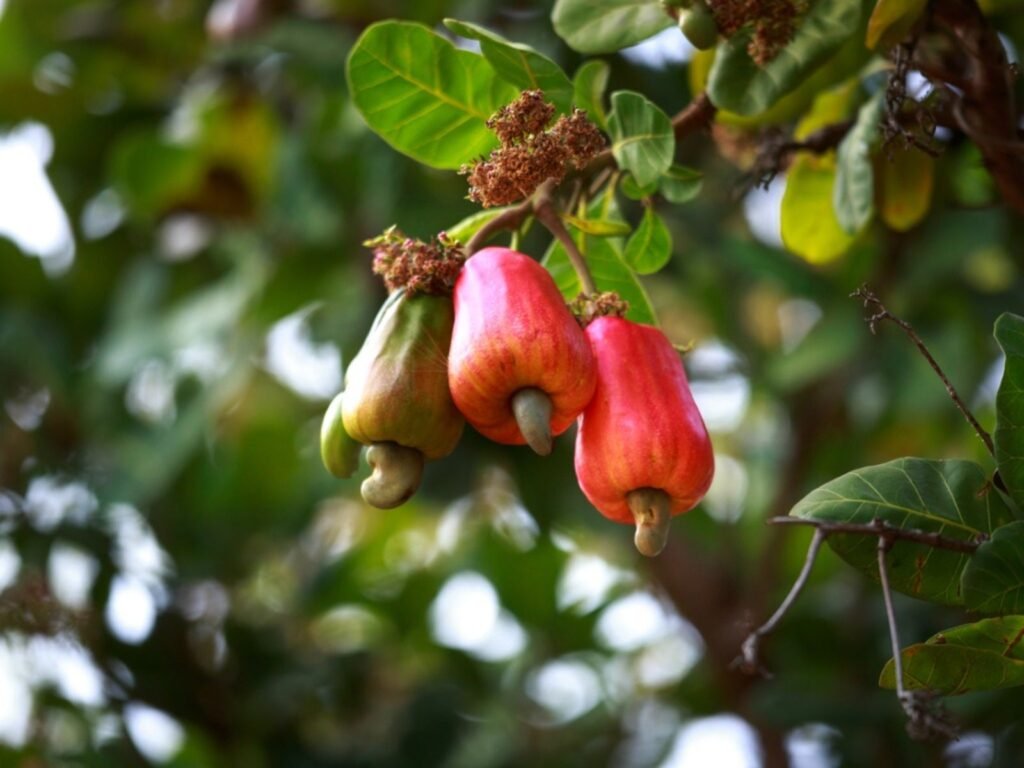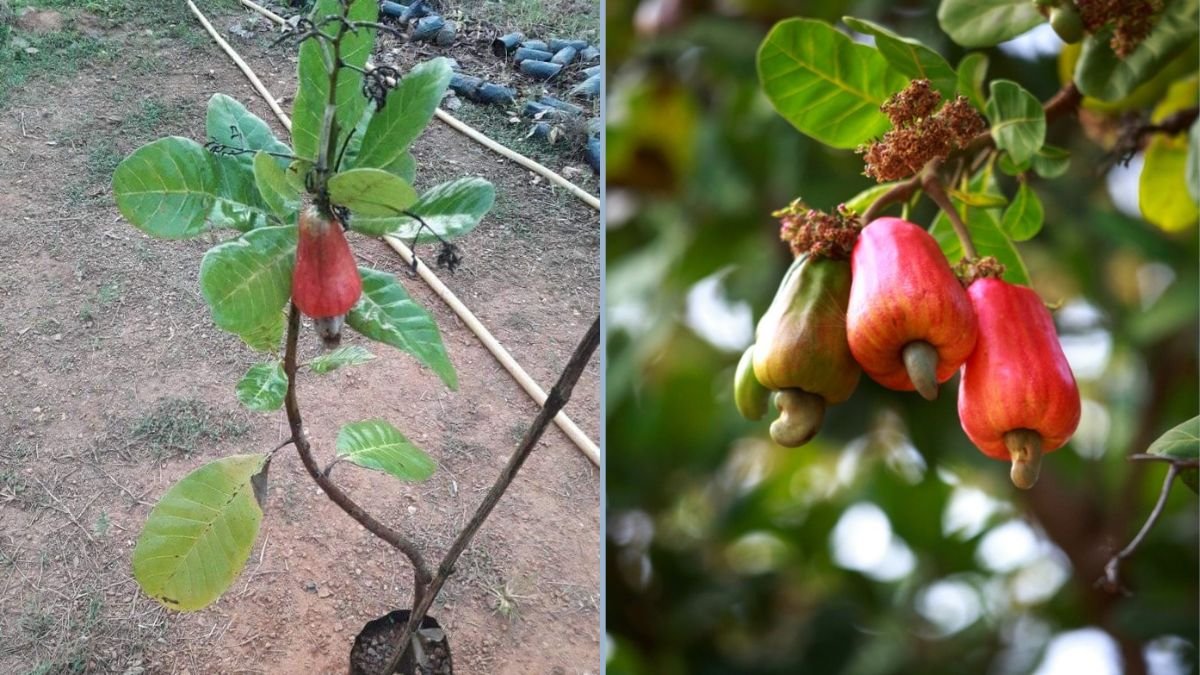Cashew trees are widely celebrated for their delicious nuts, flavorful apples, and evergreen beauty. Traditionally grown in orchards, these tropical trees can also thrive in pots, making them accessible to urban gardeners, balcony farmers, and anyone with limited space. Growing a cashew tree in a pot is not only practical but also rewarding, allowing you to enjoy fresh cashews right from your home.
In this guide, we’ll walk you through the entire process of cultivating a cashew tree in a pot—from selecting seeds, planting, and caring for seedlings to harvesting. With this method, even beginners can achieve a fruitful and healthy cashew tree.
Why Grow Cashew Trees in a Pot?

Growing cashew trees in pots has several advantages:
- Space efficiency: Perfect for small gardens, terraces, or patios.
- Mobility: Potted trees can be moved to optimize sunlight or protect from harsh weather.
- Controlled growth: Easier to manage soil, watering, and organic fertilization.
- Urban gardening: Allows people without large plots of land to grow fruit-bearing trees.
- Sustainability: Promotes homegrown, pesticide-free nuts and reduces dependency on store-bought produce.
Cashew trees in pots can thrive with proper care and can still produce abundant nuts and cashew apples.
Step 1: Selecting and Preparing Cashew Seeds

The first step in successful cultivation is choosing healthy cashew seeds:
- Mature seeds: Select seeds from fully matured cashew nuts. Immature seeds have lower germination rates.
- Intact seed coat: Avoid seeds with cracks, mold, or damage. The outer shell protects the embryo and ensures viability.
- Fresh seeds: Freshly harvested seeds have higher success rates. Store in a cool, dry place if not planting immediately.
Pre-Planting Preparation
Cashew seeds germinate best when pre-treated:
- Soak the seeds: Place the seeds in water for 24 hours to soften the outer shell.
- Check for viability: Discard seeds that float, as these may be non-viable.
- Optional scarification: Lightly sand the outer shell to improve water absorption and encourage germination.
Proper preparation ensures faster and more consistent sprouting.
Step 2: Choosing the Right Pot

A suitable pot is essential for healthy root development and tree growth:
- Size: Start with a pot of at least 12–15 inches in diameter and 12 inches deep for seedlings. For mature trees, upgrade to a 20–30 gallon pot.
- Material: Plastic, ceramic, or clay pots work well; ensure they are durable and resistant to sunlight.
- Drainage: Ensure multiple drainage holes to prevent waterlogging, which can cause root rot.
- Mobility: Choose lightweight pots or use plant trolleys to move the tree if needed.
A properly sized and drained pot supports root health and overall growth.
Step 3: Preparing Soil for Cashew Trees
Cashew trees prefer sandy, well-draining soil that is rich in organic matter:
- Soil mix: Mix garden soil, sand, and well-rotted compost in equal parts.
- pH level: Slightly acidic to neutral soil (pH 6–7) is ideal.
- Aeration: Add perlite or small gravel to improve aeration and prevent compaction.
Well-prepared soil promotes strong root development and prevents water stagnation.
Step 4: Planting Cashew Seeds in Pots

Planting seeds properly ensures healthy germination:
- Fill the pot with the prepared soil mix, leaving 2–3 inches from the top.
- Plant the seed with the pointed end facing downward, about 1–2 inches deep.
- Cover lightly with soil and water gently.
- Place the pot in a warm, sunny location with indirect sunlight initially.
Germination Timeline
- Cashew seeds typically germinate in 2–4 weeks under favorable conditions.
- Keep the soil consistently moist but not waterlogged.
- Once seedlings emerge, gradually introduce them to more direct sunlight to strengthen growth.

Step 5: Caring for Cashew Seedlings
Proper care during the early stages ensures robust growth:
Watering
- Keep the soil evenly moist, especially during germination and early growth.
- Avoid overwatering, which can lead to root rot.
- Use a watering can or drip irrigation to provide gentle, deep watering.
Sunlight
- Seedlings require at least 6 hours of sunlight daily.
- Gradually increase exposure to direct sunlight to harden the leaves and stems.
Fertilization
- Apply a balanced, slow-release organic fertilizer once seedlings have 2–3 sets of true leaves.
- Use compost or organic liquid fertilizers every 2–3 weeks to enhance growth.
Pruning
- Remove weak or damaged shoots to encourage a strong central stem.
- Early pruning shapes the tree for better structure and future fruiting.
Pest and Disease Management
- Monitor for aphids, mealybugs, and fungal infections.
- Use neem oil or organic horticultural sprays to prevent infestations.
- Ensure proper spacing and airflow to minimize disease risks.
Step 6: Long-Term Care for Potted Cashew Trees
Even in pots, cashew trees can live and produce nuts for many years with proper care:
Upgrading the Pot
- As the tree grows, transplant to a larger container (20–30 gallons) to accommodate root expansion.
- Ensure continued drainage and nutrient-rich soil.
Sunlight
- Cashew trees thrive in full sunlight; position the pot in a location with 6–8 hours of direct sunlight daily.
- During extreme heat or frost, provide temporary shading or move the pot to a sheltered area.
Watering and Fertilization
- Deep water during dry spells to encourage strong root development.
- Apply compost or organic fertilizers seasonally to support flowering and fruiting.
Pruning
- Remove crossing or crowded branches to improve air circulation.
- Shape the canopy to maintain balance and encourage flower production.
Step 7: Flowering and Pollination
Cashew trees produce both cashew nuts and the associated cashew apple:
- Flowering: Trees bloom with small, fragrant flowers in clusters during the growing season.
- Pollination: Bees and other insects are primary pollinators. Hand pollination can improve fruit set in small-scale container setups.
- Fruit set: A healthy potted cashew tree can produce a moderate number of nuts even in limited space.
Successful pollination ensures a good nut yield and enhances the overall health of the tree.
Step 8: Harvesting Cashews
Cashew nuts require careful harvesting and processing:
- Signs of maturity: Cashew apples turn bright yellow or red, and the attached nut hardens.
- Harvesting: Pick both the apple and nut carefully; do not drop as the nut shell can be toxic before roasting.
- Processing: Dry the nut in a ventilated area, then roast or cure to remove toxins.
- Storage: Store processed nuts in airtight containers in a cool, dry place.
Potted cashew trees may produce fewer nuts than field-grown trees initially, but consistent care can yield a satisfying harvest.
Tips for Growing Cashew Trees Successfully in Pots
- Select fresh, healthy seeds for better germination.
- Use well-draining soil to prevent root rot.
- Provide consistent watering without overwatering.
- Ensure adequate sunlight for strong growth and flowering.
- Apply organic fertilizers regularly to support nutrition.
- Prune early and regularly to maintain structure.
- Monitor for pests and diseases and treat organically.
- Be patient: Cashew trees may take 3–5 years in pots to produce nuts.
Conclusion
Growing a cashew tree in a pot is both easy and rewarding, allowing gardeners with limited space to enjoy this tropical gem. By selecting healthy seeds, preparing soil properly, providing consistent care, and managing pests and nutrients, even a container-grown cashew tree can thrive and produce a bountiful harvest.
Although potted cashew trees may produce smaller yields than full-sized orchard trees, they provide fresh cashew nuts, vibrant cashew apples, and an attractive, evergreen addition to your garden or balcony.
With patience and dedication, your potted cashew tree will not only enhance your home garden aesthetically but also provide delicious, nutrient-rich nuts for years to come. Growing cashew trees in pots proves that even limited space can yield a fruitful and sustainable harvest.
